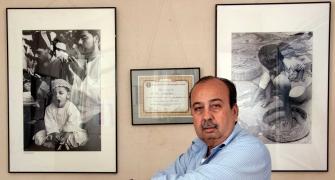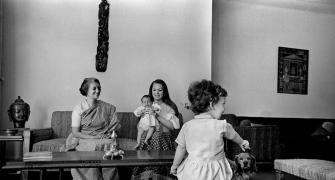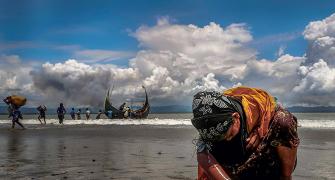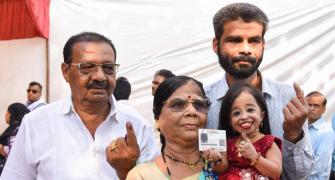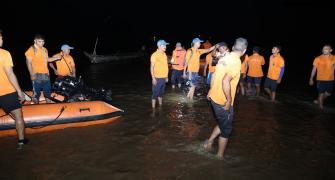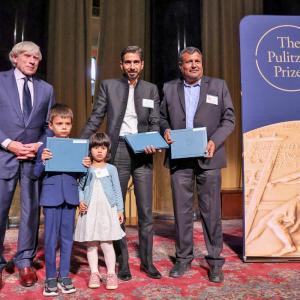'When I realised that I was to take the pictures of Pandit Nehru, I was very nervous and scared.'
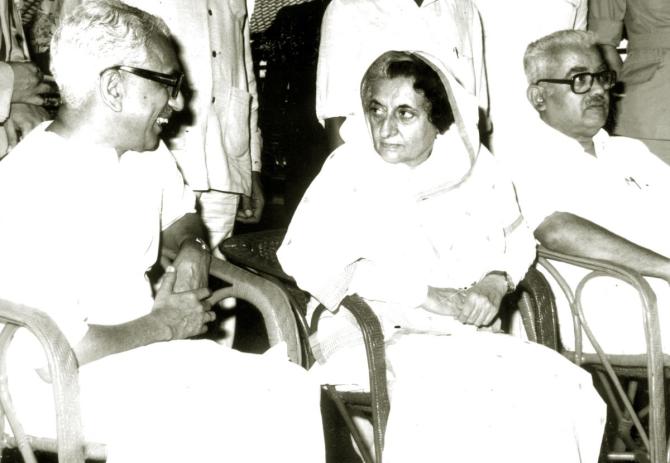
It is no exaggeration if one were to say that 84-year-old Ramachandran Nair grew up in the dark room of the studio set up by his father.
When his classmates played during the lunch break, he would run to the studio to see how images magically appeared in films.
It was way back in 1910 that his father Krishnan Nair started his first studio, Krishnan Nair Brothers in Thrissur.
No wonder Ramachandran Nair chose to be a professional photographer at the age of 17, soon after he finished his school.
In this conversation with Rediff.com, Mr Nair goes down memory lane and tells Shobha Warrier how he captured Jawaharlal Nehru, Dr Sarvepalli Radhakrishnan, Indira Gandhi and others in his camera.
Mr Nair was the official photographer for the Kerala Kalamandalam, the world class learning centre for traditional art forms started by Vallathol Naryana Menon, the renowned Malayalam poet, for six decades.
It is a pity that he did not keep a single copy of those visual treasures for himself.
"I was so young and naive that it never occurred to me that what I was doing was recording history for future," he says.
"Colour photos fade after 4-5 years. On the other hand, the black and white photos, if washed and processed properly, will retain the same quality for many years."
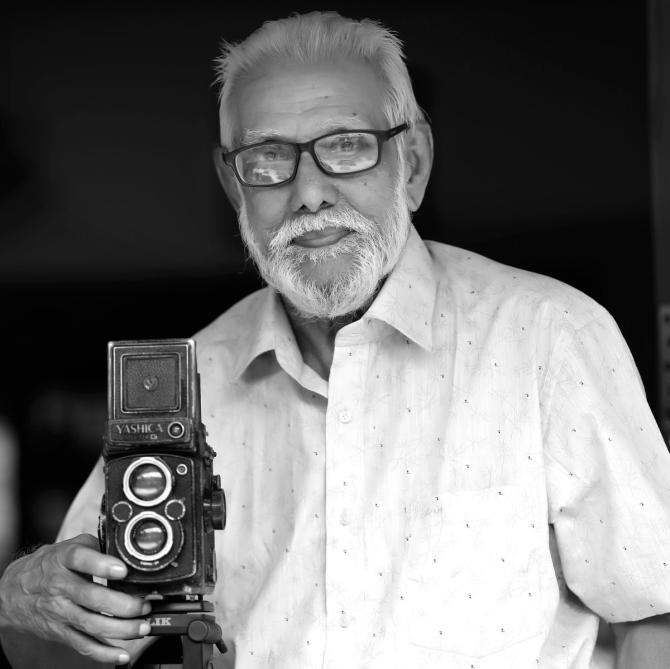
Since your father had set up a photo studio in 1910, was spending time in the studio one of your earliest memories?
My father's guru was his uncle Raman Pillai who had set up a studio in 1864, the first in the Travancore-Cochin region.
After having learnt the art of photography from his uncle, my father started his first studio under the name Krishnan Nair brothers.
Later on, he set up studios in Thiruvananthapuram, Kottayam, Ernakulam, Kottayam and then in Kozhikode.
I grew up in Thrissur, and at that time the studio in Thrissur was taken care by my cheriachan, father's youngest brother.
So, in a way I learnt everything from him; he was my guru.
Since the studio was very close to my school, I had my lunch at the studio which I finished very fast so that I could watch photos being developed in the dark room.
It was fascinating for me as a child to see pictures appearing on the film as the studio workers washed the film in two or three chemicals, one after another. Last, they washed the film in running water.
In fact, you are supposed to wash the chemicals away for three hours in running water.
In those days, we followed the rules strictly. That's why even today, the photos taken by us have not faded.
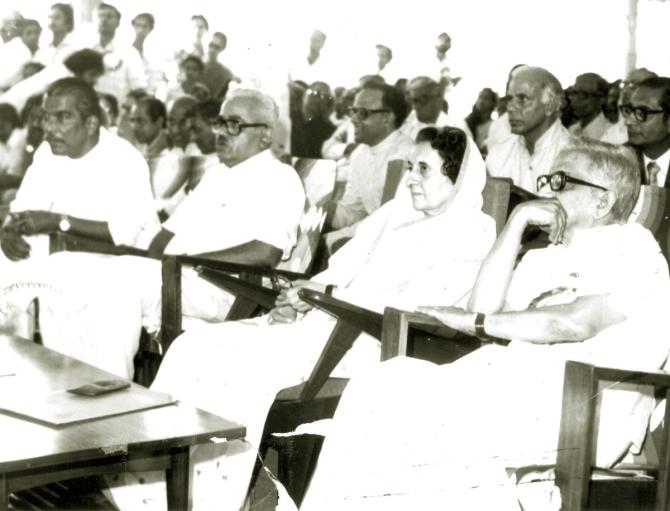
We see many black and white photographs becoming yellowish in colour...
That happens when you don't process it properly and don't wash the chemicals away fully from the negative. Then, the photos fade with age and also become mouldy.
Even after so many decades, the pictures we have taken remain black and white, and not yellow in colour!
When did you join your cheriachan's studio as a professional?
Like I told you, I used to spend the afternoons and evenings in the studio even when I was in school. That was my first initiation into photography.
Soon after I finished school, at the age of 15, I joined the studio.
My first assignments were taking passport size photos. Cheriachan did not let me take any other photos.
My main apprenticeship involved working in the dark room because that's where we mastered the real technique behind photography.
By the time I was 17, I was allowed to take outdoor pictures too. Because I was short and tiny, many people didn't like the idea of a young boy taking pictures.
They did not have the confidence. So, cheriachan sent someone bigger with me for outdoor shoots! In fact, the boy came with me was learning under me, my sishyan! But when we were outdoors, we behaved as if he was teaching me photography!
My first outdoor assignment was taking photos of a big family.
In those days, when all family members assembled at home for some function, they called the studio to take group photos. And we took the photos outdoors as we didn't use any flash.
Even when we took pictures outdoors, we used a tripod.
Unlike today, couples would come to the studio after marriage to take their wedding photos!
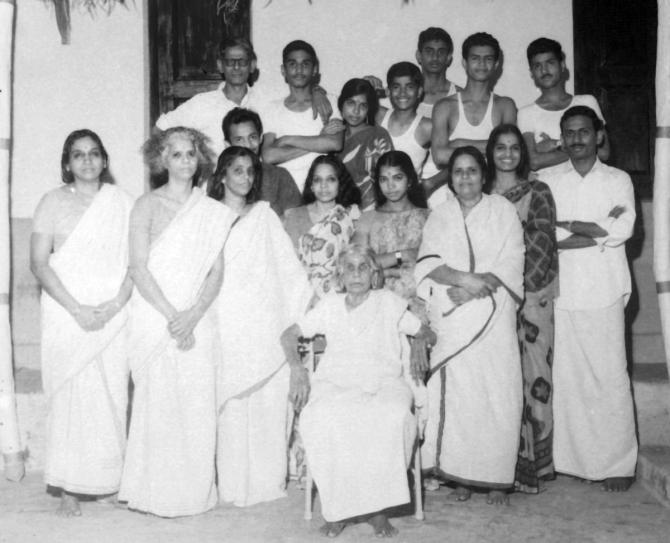
As you used film in those days, you might have been very careful taking every photo...
Of course, we had to be extremely careful. We could not afford to waste a single shot.
That was one of the first things taught to us.
How long did you work for your cheriyachan?
When I was 18, he asked me to start a studio of my own in Palakkad.
He financed it, of course. And I took most of the things needed for a studio from Thrissur like the camera, lenses, etc. I didn't have to buy anything new.
It was a new and challenging experience for me to manage a studio of my own, but I was not nervous or worried as I literally grew up in a studio. Perhaps it was there in my genes!
Some of the major assignments we had in those days were taking class photos of school and college students at the end of the year.
It was a ritual schools and colleges never missed. During February and March, we would be flooded with these assignments.
Maybe because I was very young and inexperienced to run a studio of my own, the studio incurred huge losses. Finally, I had to close it down.
The studio must have been a loss, but the most memorable event that happened to me was getting a chance to take photos of Dr Sarvepalli Radhakrishnan. He was the Vice President of India then and had come to inaugurate a municipal office.
When I came to know that he was coming to Palakkad, I gate-crashed to take his photos.
Those were the days when you could just go and take pictures of even the Vice President of India. It was in 1959, I think.
He was an extremely striking personality like Nehru with that unique head gear of his.
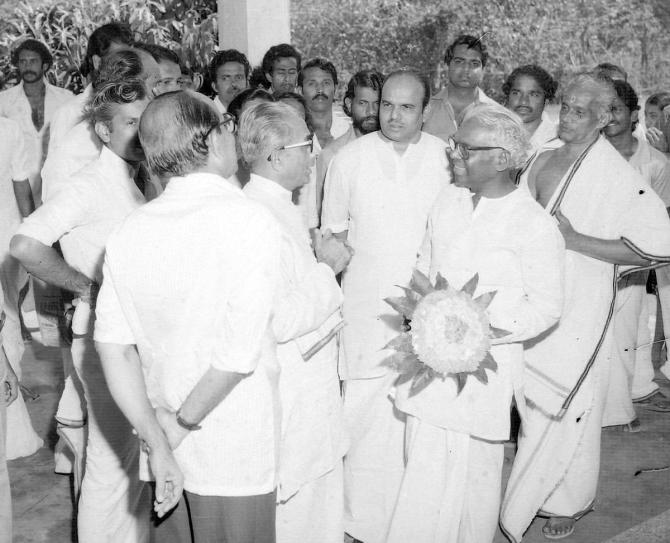
When did you get the chance to photograph Jawaharlal Nehru?
It was in 1956 or '57, after the state of Kerala was born that Pandit Nehru came to visit the Sahitya Academy in Thrissur, and I was asked to be the official photographer.
To tell you the truth, when I realised that I was to take the pictures of Pandit Nehru, I was very nervous and scared.
Of course, I was very excited too. After all, I was just a teenager then.
That was the first time in my life that I was taking the photos of a well-known personality, and he happened to be the Prime Minister of India.
I still remember he looked so tall and handsome in a sherwani and a Gandhi cap.
He had such a magnetic personality that it was a pleasure taking his photos.
As I was the Sahitya Academy's official photographer, I could go very near him.
It was an unforgettable moment listening to him speak.
Unfortunately, I do not have a single photo of Panditji with me now.
In those days, we have to hand over the negatives also the organisers.
Later, I had the good fortune to take Indira Gandhi's photos too. That was when she came to visit Kalamandalam.
How did your association with Kerala Kalamandalam start?
It was through my friends who worked at the Kalamandalam that the association started.
I became their official photographer almost six decades ago.
I think it was in 1966 after she became Prime Minister that Indira Gandhi visited Kalamandalam.
She came in a helicopter, and I started taking pictures from the moment the authorities received her there.
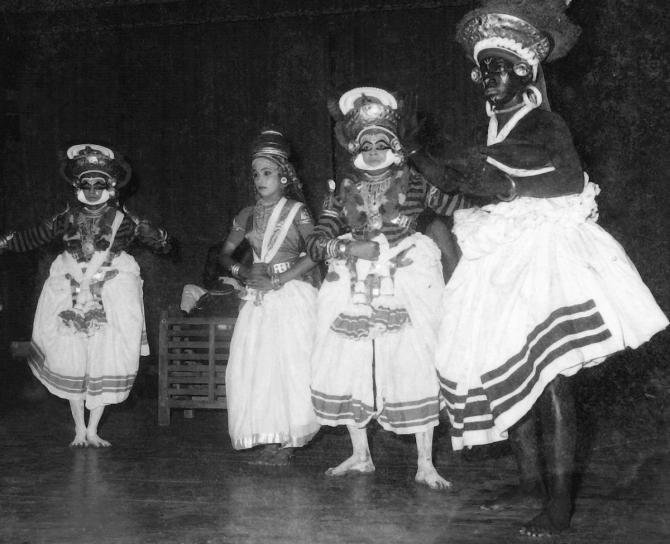
You saw Mr Nehru at close quarters. How was Mrs Gandhi in person?
She was also extremely fair and a very attractive personality like Nehru.
From each roll of the film, we could take 12 photos, and I must have used ten rolls.
That means more than 100 photos, but we would take copies of only those photos chosen by Kalamandalam.
I remember the camera I had when I took Nehru's pictures was a Yashica, but when I took Indira Gandhi's pictures, I was using a Rolleiflex, a German camera.
By then, we had also started using an electronic flash.
I also remember taking pictures of V K Krishna Menon who was the defence minister then. He was also an imposing personality, dark and tall.
Unlike Nehru, who was smiling and pleasant all the time, Krishna Menon had a serious disposition.
I also found Dr Radhakrishnan a very serious person. Like Pandit Nehru, Indira Gandhi also had a smiling and friendly face.
Morarji Desai also came to Kalamandalam when he was the Prime Minister, and he was also quite serious.
I also had the good fortune of taking the pictures of R Venkataraman, Neelam Sanjiva Reddy, and K R Narayanan when he was a central minister.
I also remember enjoying the speech by R Venkataraman.
I have also taken the photos of all the chief ministers of Kerala, from EMS (Namboodiripad) onwards; C Achutha Menon, E K Nayanar, K Karunakaran, etc.
I was only a teenager when I took photos of EMS when he came to our Ernakulam studio in 1957.
At that time, he was a Communist party politburo member. Later, I took photos of the communist party rallies and meetings.
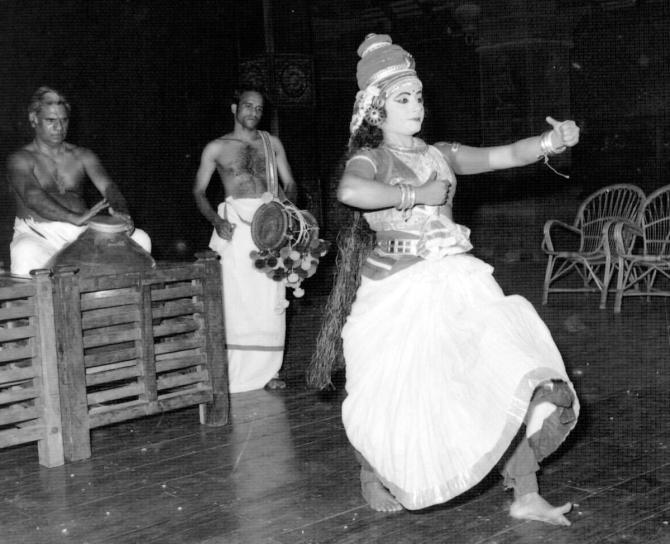
From a photographer's perspective, how do you see the transition from the black and white era to the colour?
Don't you see that the new colour photos fade after 4-5 years? On the other hand, the black and white photos, if washed and processed properly, will retain the same quality for many years.
I am of the opinion that you can capture real life or real beauty only in B&W photos.
I know I am a little biased to black and white photos. Maybe because all my life, I have taken only black and white photos.
I stopped taking photos actively after I turned 70.
In today's cameras the viewfinder is very small, and I find it difficult to see properly.
Of course, I don't understand the latest cameras too. I will have to start learning from the beginning (laughs).
From films, we have moved to digital... Some photographers say, they find taking photos in films more challenging.
Is it not true? There is nothing more satisfying than taking a photo, then washing the negative of the film, processing it in the dark room and finally coming out with a positive! You need a lot of patience to do all these things.
From the age of 15 to 70, you worked as a professional photographer. What is the most cherished memory you carry with you?
Though it happened when I was just 17, I can never or will forget taking Panditji's photos. It will remain the most unforgettable memory!
Feature Presentation: Rajesh Alva/Rediff.com

